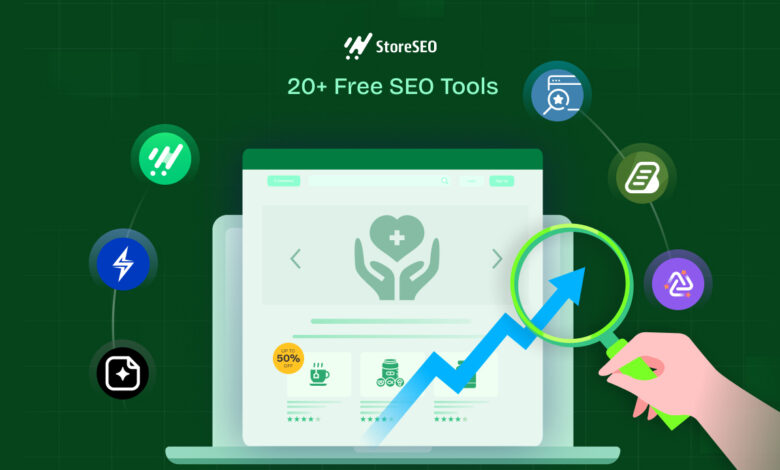From Manual to Smart: Tools That Streamline Shopify Product Listings

Managing product listings on Shopify might seem simple at first but as your catalog grows, so does the complexity. Manually uploading products, creating variants, assigning images, updating SEO fields, and syncing inventory can become a time-consuming, error-prone process.
In today’s fast-paced e-commerce environment, merchants can no longer afford inefficiencies. The solution? Transitioning from manual workflows to smart, automated systems designed to save time, reduce errors, and boost your product visibility and sales.
Let’s explore how smart tools and platforms like StarApps product listings can help you build more scalable and consistent product operations.
Why Smarter Product Listings Are Essential for Shopify Growth
A well-crafted product listing is much more than a simple product description and photo. It’s a critical touchpoint that informs your customers, inspires confidence, and ultimately converts browsers into buyers. As e-commerce evolves, shoppers expect a seamless experience from product discovery to checkout that feels effortless and trustworthy.
For your Shopify store to thrive, your product listings must deliver:
- Accurate and complete product data: Details like size charts, material info, and care instructions help customers make informed choices.
- Fast page load times: Slow-loading pages frustrate shoppers and increase bounce rates.
- Clear, high-quality images and variant options: Customers want to see every angle and color option before committing.
- SEO-optimized titles, tags, and descriptions: Helps your products appear in search results and drives organic traffic.
- Real-time stock availability: Nothing’s worse than selling something that’s out of stock or backordered.
Managing these aspects manually may work with a handful of SKUs, but once your catalog grows to hundreds or thousands, manual processes become overwhelming. Inconsistent data, outdated stock info, and slow updates create friction leading to lost sales and poor customer experiences.
The Risks of Relying on Manual Product Listings
Manual product listings are a common starting point for many Shopify merchants. However, as your business scales, the hidden costs become clear:
- Human error: Even minor mistakes like typos, pricing errors, or missing variant info can damage brand credibility and lead to costly returns.
- Inconsistent variant mapping: Without a visual system, customers often struggle to pick the right size, color, or style leading to confusion and abandoned carts.
- Missed SEO opportunities: Neglecting metadata fields like alt text, meta descriptions, or keyword-rich titles can hurt your product’s search visibility and reduce organic traffic.
- Inefficient scaling: Launching new collections or syncing product data with marketplaces like Amazon or Google Shopping can become bottlenecks when done manually.
These pitfalls result in lost revenue, increased customer service issues, and slow time-to-market for new products.
What Makes a Product Listing Tool “Smart”?
Smart product listing tools are not just about batch uploads they revolutionize how you manage, present, and optimize your entire catalog. They leverage automation, AI, and visual merchandising to reduce manual work and enhance the shopper’s experience.
Key characteristics of a smart tool include:
- Automation capabilities: Automate bulk edits, image resizing, SEO tag generation, and variant creation using preset rules and templates.
- AI and logic-driven features: Some tools use AI to categorize products, generate descriptions, or format options dynamically, saving time and boosting accuracy.
- Visual merchandising enhancements: Tools like StarApps product listings replace dull dropdowns with interactive, clickable swatches that improve engagement and ease of choice.
- Seamless integration: Sync effortlessly with Shopify’s backend, inventory management systems, print-on-demand services, and external marketplaces like Amazon or Meta.
Such tools create a dynamic and scalable product catalog that serves both backend teams and frontend customers.
Essential Features to Look for in a Shopify Product Listing App
When selecting a product listing app to streamline your Shopify store, make sure it offers:
- Bulk editing & CSV import/export: Efficiently update large volumes of products without repetitive manual entry.
- Smart variant handling: Link color swatches or image thumbnails to specific product variants for clearer customer choices.
- Auto-generated SEO fields: Automatically fill meta titles, descriptions, and alt texts for improved search rankings.
- Real-time stock and price updates: Keep listings accurate and current to avoid disappointing customers.
- Visual tools: Swatch displays, color pickers, and live preview options to elevate product discovery.
- Mobile optimization: Ensure listings and variant selectors are fully responsive for mobile shoppers, who form the majority of traffic.
Apps like StarApps Studio go beyond data management by delivering visually intuitive variant selectors that help shoppers find the perfect product faster, improving UX and boosting conversions.
Top Tools to Automate and Improve Your Shopify Product Listings
Here are some of the top tools that Shopify merchants rely on to transform their product listing workflows:
- Matrixify (formerly Excelify): A robust import/export tool that supports large datasets, custom metafields, and complex updates.
- Ablestar Bulk Product Editor: Simplifies mass edits across prices, tags, descriptions, and inventory—great for quick, large-scale changes.
- Stock Sync: Automates inventory and pricing synchronization between suppliers, warehouses, and your Shopify store.
- Feedonomics: Optimizes multi-channel product feeds, making it easier to list your products on Google Shopping, Facebook, and more.
- StarApps Studio: Specializes in visual merchandising by turning standard variant selectors into clickable, image-based swatches. This visually-driven approach reduces shopper confusion, accelerates decision-making, and significantly improves conversion rates.
How StarApps Product Listings Elevate the Shopping Experience
Shoppers today want more than static product info; they want interaction and clarity. StarApps product listings deliver just that by:
- Replacing standard dropdowns with interactive swatches for colors, patterns, and images.
- Automatically linking product images to variants, so customers see exactly what they’re selecting.
- Providing mobile-optimized selectors that ensure a smooth shopping experience on phones and tablets.
- Minimizing confusion and mistakes by offering clear, visual variant choices that reduce returns and improve satisfaction.
By turning your listings into engaging, visually rich experiences, StarApps helps you keep shoppers on your site longer and converts visits into purchases.
Benefits of Smart Listing Tools: Real Results for Real Merchants
Merchants who adopt automated listing tools report tangible benefits:
- Up to 80% reduction in time spent managing catalogs and updating listings.
- Fewer customer complaints and returns caused by incorrect or missing variant info.
- Improved SEO rankings due to consistent, optimized metadata across products.
- Higher conversion rates thanks to interactive variant selectors and enhanced visuals.
- Scalable workflows that support rapid product launches and marketplace expansions.
Whether you’re a solo founder or a growing team managing thousands of SKUs, smart tools pay for themselves by increasing efficiency and sales.
How to Transition from Manual to Smart Listings Without Chaos
Transitioning to automation can feel overwhelming, but following these steps can ease the process:
- Audit your current workflow: Identify pain points and manual bottlenecks.
- Start small: Implement tools like StarApps Studio on your most popular or complex product categories first.
- Choose apps that integrate well with your existing Shopify apps and workflows to avoid fragmentation.
- Document and train your team on new processes to ensure consistency.
- Continuously monitor and optimize: Use analytics to track improvements and run A/B tests to refine your listings further.
Conclusion
Your product listings are much more than lines of data; they’re the gateway to your brand’s success. Moving from manual uploads to smart, automated product listing workflows isn’t just about saving time; it’s a powerful growth strategy.
With StarApps Studio, Shopify merchants can transform traditional, static product pages into interactive, visually-driven shopping experiences. From intelligent swatch integration to dynamic variant mapping, StarApps product listings enhance both UX and backend efficiency.
If you want to simplify your product listing process, reduce errors, and stand out in a crowded market, let StarApps be your trusted partner and product listing powerhouse.




